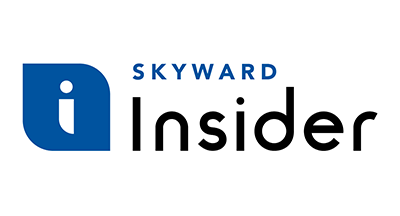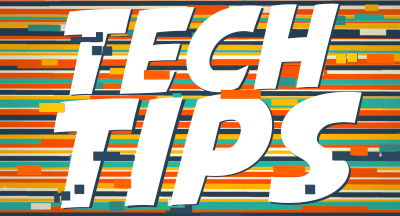Remote Onboarding: A New Hire’s Story
|
Cassidy Downs PR Pro, Recreational Writer, Edvocate |
It was my first “real” job out of college, and I was so excited to land my dream job at Skyward. A long gap between my interview and start date left a lot of room for excitement and preparation . . . until the coronavirus pandemic hit the United States.
Not the Normal First-Day Jitters
While this was no doubt a scary time for all, I had another large worry—what would work look like for me as a new employee? Would I be able to start this position on time, or at all? It seemed like I had more questions than answers.While a few days of wondering and worrying went on, I was soon contacted by Skyward’s HR office to fill me in on the new plan for starting my position. I found out that I would still begin on my intended start date, I would be onboarded remotely while being supplied with a computer and other necessary paperwork in advance, and I would be working from home until further notice. I was relieved, but this information left me with other questions. What would working remotely be like? Would I still feel like a part of the team? How long would working from home have to last?
A Welcomed Beginning
My first day was jam-packed but flew by fast. I quickly saw how excited the marketing department was to have me begin, and that having the right reception and onboarding process is crucial to making any employee (not just those beginning remotely) feel welcomed and comfortable in their new role.Some of the things that made me feel especially welcomed included:
• Welcome emails and video chats with different team and managerial members, including some from different departments.
• Mini biographies that each of my team members created to introduce themselves before we met via video chat on Microsoft Teams.
• An assigned mentor on my team (other than my manager) whom I could go to with questions or for advice.
• Weekly virtual coffee meetups with my team to give us a chance to meet and catch up without a strict work focus.
To organize my tasks, my manager created a Planner board specifically for onboarding. Projects ranged from reading Advancing K12 and Skyward Insider blog posts to creating an email signature and going over the employee handbook. The part I liked most about this process was that I could do everything at my own pace and read through the information myself. For more in-depth training on company practices, my manager and I video chatted using screen sharing on Teams. Yay for modern technology!
Why Is Onboarding So Important, Anyways?
Onboarding took about three weeks in total. I enjoyed this longer process because it allowed for information to be spread out and focused on accordingly. Although having a longer onboarding process may seem like a waste of time for employers, research shows that companies with longer onboarding processes see their employees gain full proficiency 34% faster than those with shorter processes. Thus, a longer onboarding process can actually save time in the long run.Statistics also say that almost 70% of employees are more likely to stay with a company for at least three years after a great onboarding experience, and effective employee onboarding can improve employee retention by 82%. Furthermore, the average company spends $4,000 and 24 days to hire a new worker, meaning losing that new worker, possibly due to poor onboarding, makes the company lose valuable time and money. It’s well worth the effort to create a positive onboarding experience for all new hires.
Tips and Tricks for Your Onboarding Experience
Surprisingly enough, a whopping 88% of workers believe their organization did a poor job of onboarding them. But fear not—there are steps you can take to make future employees be part of that coveted 12%!Here are a few ways to make employees onboarding remotely feel welcomed and ready to begin their journey:
• Fill them in with some details of what their first day will look like ahead of time, and make sure they have the equipment they need.
• Make them feel welcomed through introductions from their coworkers.
• Try to provide time to meet each other personally without a strict work focus, similar to how you would likely meet in the workplace for the first time. This will help them feel more connected to the team.
Next, here are some tips for the onboarding process itself:
• Use a platform your new hires will use frequently in their new career. This empowers them to learn the system and their new role at the same time!
• Don’t rush the onboarding process. A longer process helps new hires get up to speed faster in the long run.
• Allow new hires to learn independently, giving them the opportunity to explore but still ask questions along the way.
• Use video chats and screen sharing to create a richer form of communication and bring a personal feel to learning.
• Most importantly, put effort into your onboarding process to help ensure your employees come out satisfied—and more likely stay at your district for a long time.
Finally, here are some tips for those employees beginning remotely:
• Structure your work from home days like how you expect your office days to look.
• Separate your home life from work life by staying clean and organized.
• Take the advice you are given, and don’t hesitate to ask questions.
• Even if you don’t like working from home, try to find the positives. For example, choose to work outdoors on nice days—you likely won’t get this opportunity once you’re back at work!
Three months into my new position, I still haven’t been in the office or met most of my co-workers in person. But because of my onboarding experience and the efforts of my team, I feel immersed in the culture of the company here at Skyward, and I feel like a valued member of the team. By taking these tips to heart, both new employees and employers can enjoy the onboarding process and secure a happy work relationship for years to come.
Follow-Up Resource: The Future of Onboarding
Here from another new hire in The Future of Onboarding: Say Goodbye to Sink or Swim.Thinking about edtech for your district? We'd love to help. Visit skyward.com/get-started to learn more.
|
Cassidy Downs PR Pro, Recreational Writer, Edvocate |
Cassidy is the public relations specialist at Skyward, where she promotes a positive image in the K12 education software landscape through marketing tasks, success stories, and news monitoring. She also enjoys dabbling in writing, researching, and collaborating with her team of writers to explore and share edtech trends.

 Get started
Get started





